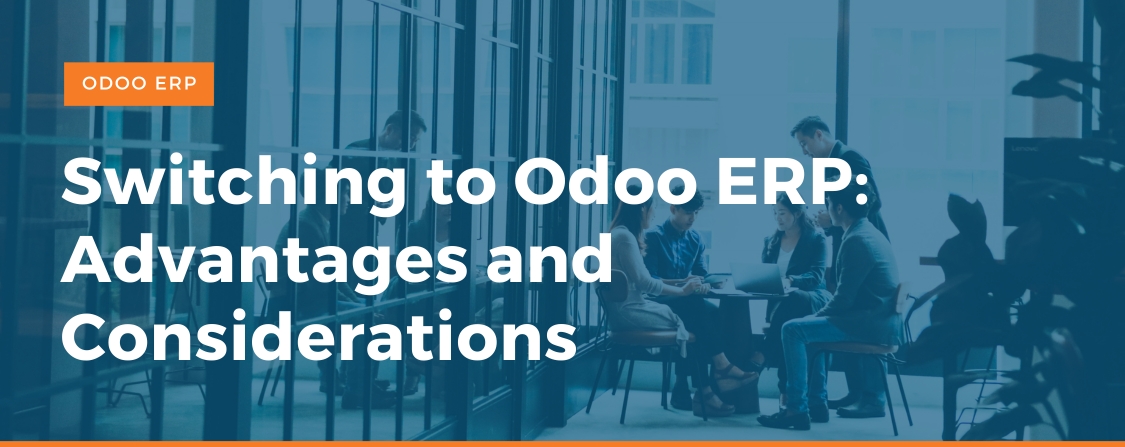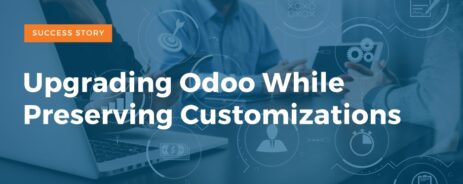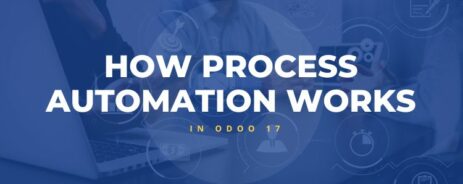
Switching to Odoo ERP: Advantages and Considerations
Open-source software has its advantages. Just look at Odoo, the leading open-source ERP (Enterprise Resource Planning) platform.
Access to code allows a community of Odoo users to craft custom apps and extensions, then share them with others. That creates incredibly flexible, customized implementations; no two Odoo instances are exactly alike. The open-source model is also typically more cost-effective than proprietary software. That’s generally true with Odoo.
But whether you’re intrigued by the open-source model, or you’ve simply heard good things about Odoo, now’s the time to consider making the switch. Here are five good reasons to start using Odoo ERP, along with three challenges to consider before replacing your current ERP.
Advantages of Switching to Odoo ERP
Why switch to Odoo ERP? Because this enterprise platform offers advantages you won’t find with other solutions. Consider these five stand-out benefits of Odoo ERP:
1. Flexibility
Odoo isn’t a one-size-fits-all solution. It’s a modular, open-source ERP that doubles as CRM (Customer Relationship Management) software.
The Odoo platform consists of dozens of official apps, along with thousands of third-party apps and extensions for highly specific functionality. That’s the power of an open-source platform; if a core Odoo app doesn’t fit your needs, odds are there’s already a solution out there.
You only see the apps you need, so there’s no unwanted functionality cluttering your implementation. As new challenges arise, your Odoo platform grows to match. It’s that flexible.
2. Cost
Odoo is also one of the most cost-effective ERP/CRM platforms on the market. As of early 2024, you could get all the core Odoo apps for less than $25 per user, per month, when you pay for a whole year at once.
For access to an external API and other advanced features, the Odoo Custom tier runs less than $40 per user, per month, on the annual plan. And you can always try a single Odoo app for free.
3. Simplicity
Odoo brings all your business software into a single, unified system. Without it, you might use Quickbooks for accounting, Slack for instant messaging, SAP for supply chain management, and Salesforce as a CRM. None of those apps play well together, leaving you with lots of manual data entry work.
With Odoo, all these features arrive pre-integrated into your platform, along with process automation tools to save a lot of labor. Odoo apps are user-friendly, too, so everyone on your team can start using the tools they need without a frustrating adjustment period.
4. Customization
No software arrives perfectly optimized for your unique needs. Luckily, Odoo makes apps easy to customize with its Odoo Studio tool. The drag-and-drop interface allows you to mix and match features into a custom app, built to your specifications.
Odoo Studio even includes automation tools — and you don’t need a background in programming to set them up.
5. Regular Updates
The Odoo team releases a new version of the software every year, like clockwork. You don’t have to upgrade, but this release schedule makes it easy to stay on the cutting edge of enterprise software.
For example, Odoo 17 includes new features like an AI copywriting tool, a website scraper for quick migration, and support for e-invoicing system Peppol. As technology advances, Odoo goes with it.
Of course, changing your ERP is a huge decision. Despite the clear benefits of moving to Odoo, the switch will also include a few challenges.
3 Things to Consider Before Switching to Odoo ERP
The benefits listed above may look great, but you can’t take advantage of them until you make the switch to Odoo. That can be a difficult process. Here are three factors to consider as you plan to implement any new ERP.
1. Time
Moving to a new ERP/CRM can take months, or even years. At some points during the process, you might not have access to crucial functionality. In other words, it’s tough to switch ERPs without disrupting your operations at least a little bit. It’s not always a quick turnaround.
2. Complexity
Migrating data from your old ERP into Odoo can get extremely complicated. Even with Odoo 17’s new Website Scraper, you’ll need human oversight of the migration process. It’s all too easy to miss something amid all the complexity.
3. Staff Training
Odoo may be user-friendly, but you’ll get the best results when you train your team in a fresh ERP/CRM. Build training into your plan — and your budget.
All three of these challenges get worse when you switch to Odoo on your own. Good news: Help is available.
Make a Smooth Transition to Odoo With Help From Blue Stingray
Skip the headaches by working with the experts. Blue Stingray is St. Louis’ leading Odoo development firm, and we’ve handled many successful ERP migrations. We’re always ready to manage your Odoo transition, and help you avoid costly errors along the way.
We can also build a custom Odoo implementation that meets your exact needs, including custom apps and extensions.
Ready to switch to Odoo ERP/CRM? Contact Blue Stingray for a painless transition.




